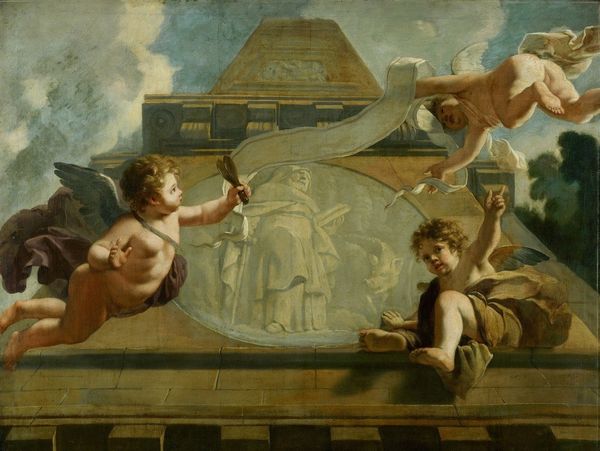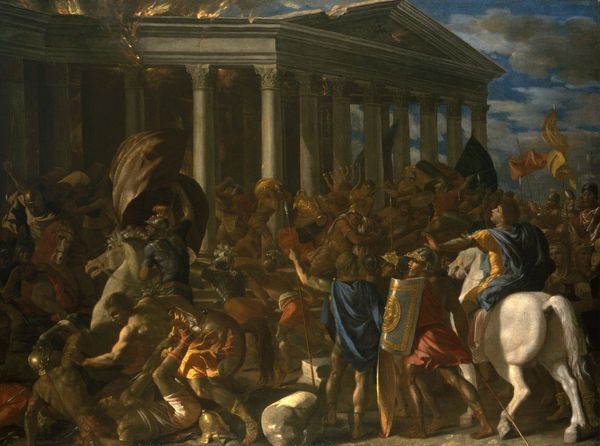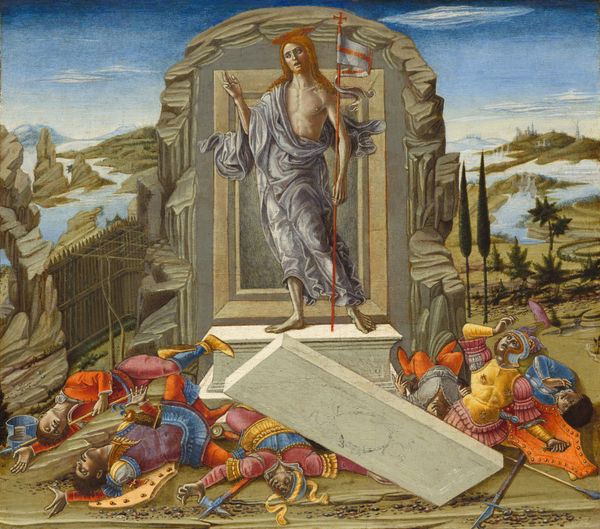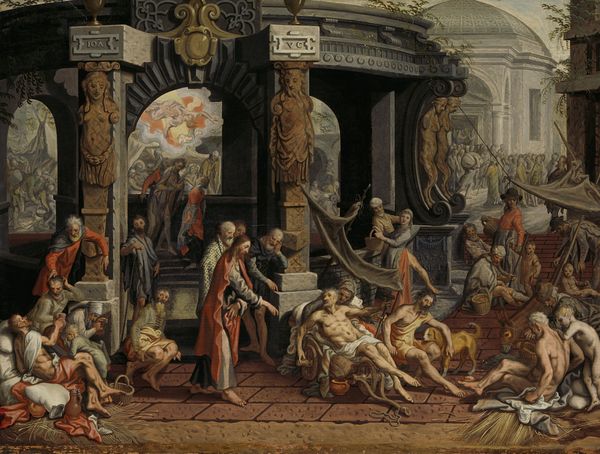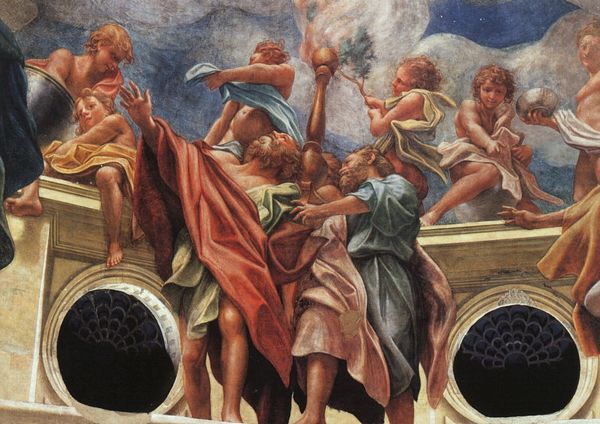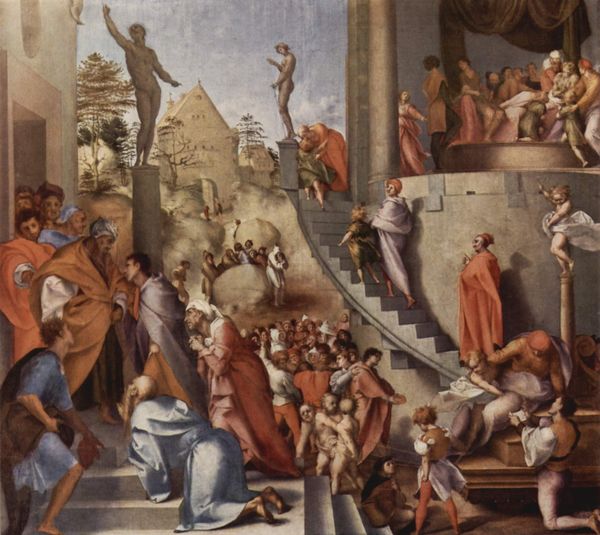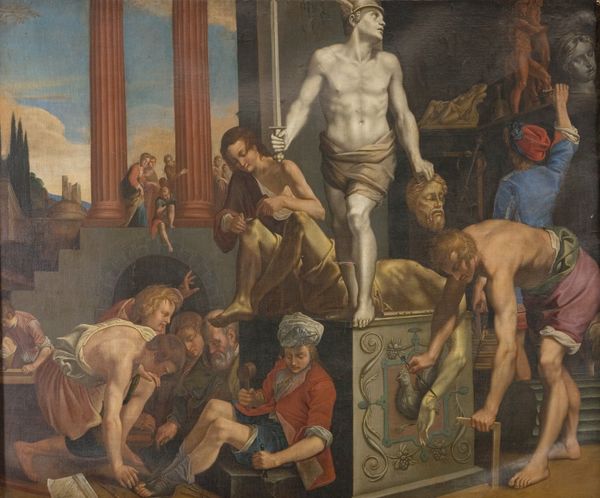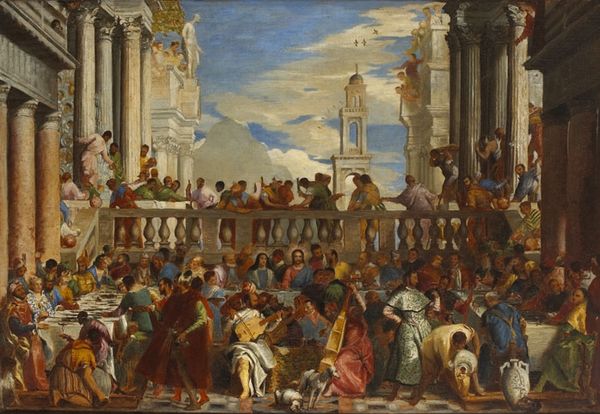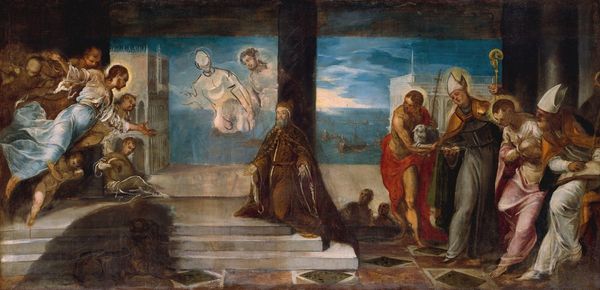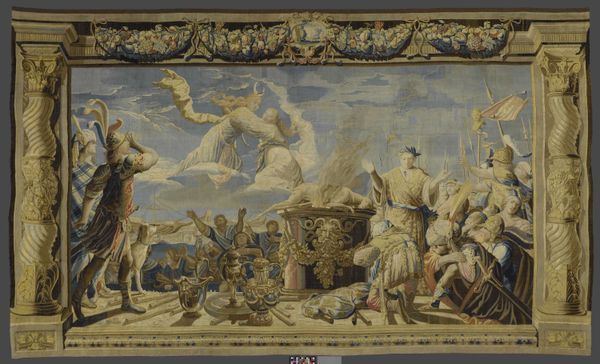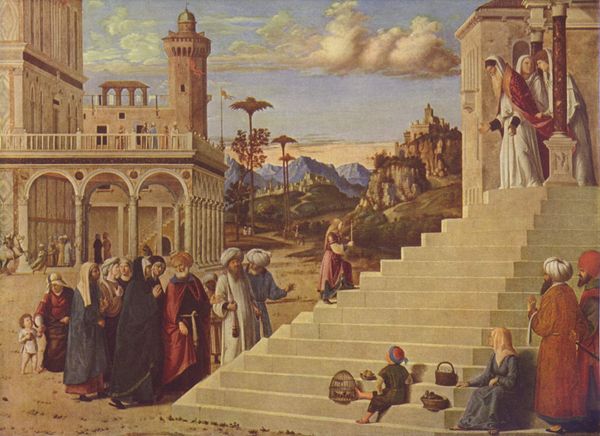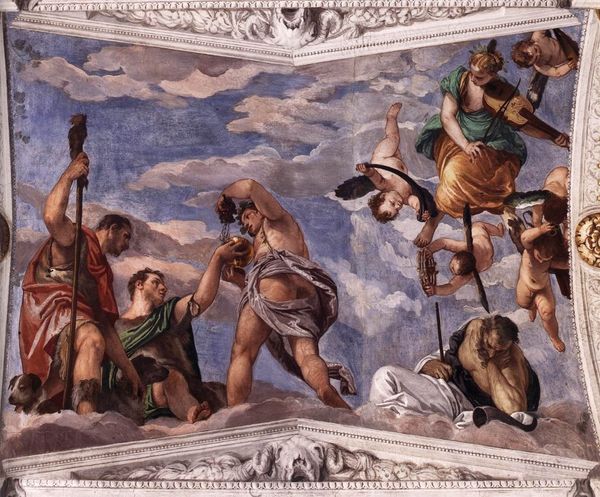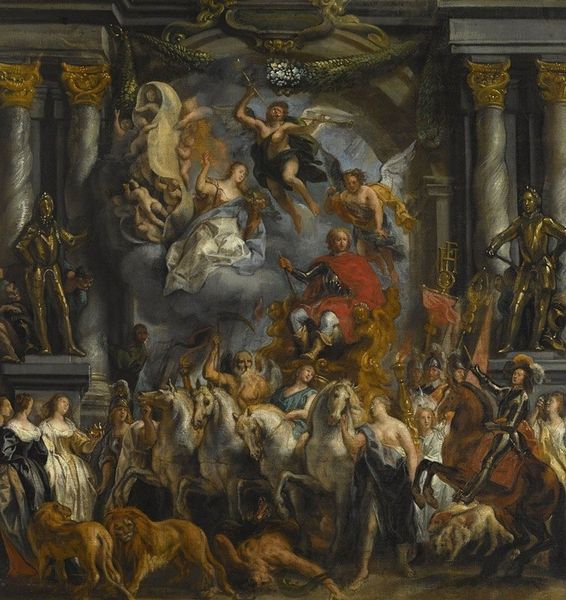
watercolor
#
landscape
#
figuration
#
oil painting
#
watercolor
#
watercolour illustration
#
history-painting
#
surrealism
Copyright: Modern Artists: Artvee
Curator: Salvador Dalí conjures a phantasmic rendition of "Temple de Diane à Epheseus" using watercolor, blending historical reference with surrealist vision. What strikes you first about it? Editor: Its eeriness, undoubtedly. The muted palette against the grandiose temple façade creates an unsettling tension, a kind of beautiful decay. Curator: Interesting you say that. We need to contextualize Diana, goddess of the hunt and the moon; her temple represented not just religious devotion, but the socio-political structures intertwined with gendered power within ancient Ephesus. Note the figures and sacrifices in front of the construction and how the surreal elements contrast with the weight of this temple's cultural capital. Editor: Precisely. Semiotically speaking, we see the juxtaposition of order and chaos, classical architecture disrupted by Dalí’s distortions. Observe the columns blurring like candle smoke. It’s a deconstruction of form itself. Curator: How can we ignore that, moreover, Dalí made this image during a global paradigm shift where social upheaval marked many locations throughout the western world. We can connect that tension and those surreal disruptions to the destabilization of conventional power systems on all levels of life and political existence. Editor: Yes, and by fragmenting our perceptions, Dalí reveals latent contradictions within representation itself, questioning our perception of a world beyond a surface level through visual allegory. Curator: Ultimately, through its historical setting, gendered symbolism, and painterly technique, this work becomes more than just a picture but a statement. It challenges us to reflect on enduring dynamics that still ripple through the social fabrics of our society. Editor: Agreed, and it's through understanding Dalí's manipulation of color and form that we begin to untangle such complexities; it speaks to the powerful ability of surrealism in questioning what we understand to be factual or historical.
Comments
No comments
Be the first to comment and join the conversation on the ultimate creative platform.
